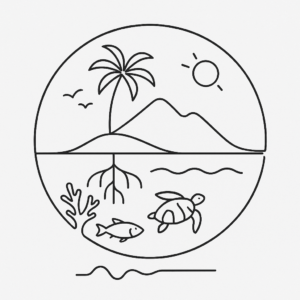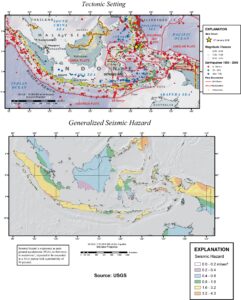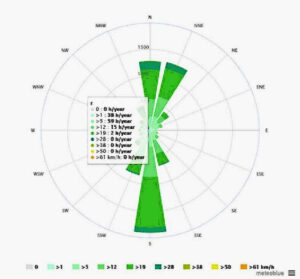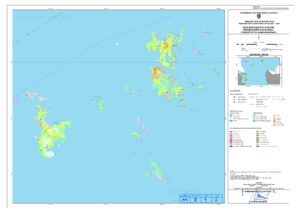Finding Islands with Stable Natural Environments
Author: Kepri Estates
Reading Time: 9 minutes
Published: 12 May 2025, 08:00 AM
 Investing in islands with stable natural environments is a smart strategy for safeguarding capital. When natural disasters are rare, tourism thrives and assets remain secure. A robust natural foundation supports consistent visitor numbers, low maintenance costs, and strong investment returns. This guide examines how minimal geological risks, infrequent severe weather events, gentle coastal conditions, and protected landscapes create an ideal environment for resort development. Learn actionable insights to identify islands that promise long-term stability and profitability.
Investing in islands with stable natural environments is a smart strategy for safeguarding capital. When natural disasters are rare, tourism thrives and assets remain secure. A robust natural foundation supports consistent visitor numbers, low maintenance costs, and strong investment returns. This guide examines how minimal geological risks, infrequent severe weather events, gentle coastal conditions, and protected landscapes create an ideal environment for resort development. Learn actionable insights to identify islands that promise long-term stability and profitability.
Table of Contents
- Low Volcano, Earthquake, and Tsunami Risk
- Infrequent Storms, Hurricanes, and Tornado Risks
- Low Winds and Waves for Guest Comfort and Operational Efficiency
- Legislated Conservation and Forestry Areas
- Frequently Asked Questions (FAQ)
- Conclusion
- Further Research
Low Volcano, Earthquake, and Tsunami Risk
 Selecting islands with minimal geological and seismic risks is key to protecting investments. Regions with low occurrences of volcanoes, earthquakes, and tsunamis offer the following advantages:
Selecting islands with minimal geological and seismic risks is key to protecting investments. Regions with low occurrences of volcanoes, earthquakes, and tsunamis offer the following advantages:
- Reduced Repair Costs: Fewer natural disasters mean less unexpected expenditure.
- Lower Insurance Premiums: A stable region commands more favourable insurance rates.
- Steady Tourist Influx: Safety attracts visitors who prioritise secure travel destinations.
- Enhanced Lending Appeal: Lenders favour projects in low-risk areas, easing capital access.
A detailed comparison of these benefits is provided in the table below:
| Risk Factor | Key Benefit | Investment Impact |
| Volcano, Earthquake, Tsunami | Minimises unexpected repair or rebuilding costs | Reduces financial strain and boosts profitability |
| Insurance Premiums | Attracts lower premiums due to reduced disaster probability | Lowers overall operating costs |
| Tourist Confidence | Enhances the marketability of the resort | Maintains consistent revenue streams |
| Lender Attraction | Improves project financing and credit conditions | Increases potential for long-term growth |
Developing a resort on an island with stable geological conditions is not just a safety measure – it is a strategic investment that pays dividends in operational efficiency and market credibility.
The Anambas is very remote from any tectonic activity, with the closest tectonic plate junction (Australian and Sunda plates) being nearly
1,000km distant to the South West and on the opposite side of Sumatra Island facing the Indian Ocean.
For further reading on the geological risks of development areas in SouthEast Asia, check out the Disaster Risk Assessment of SouthEast Asia for reference.
Infrequent Storms, Hurricanes, and Tornado Risks
 Islands with minimal exposure to severe weather events offer unmatched operational stability. The lack of frequent storms, hurricanes, or tornadoes translates into less property damage and uninterrupted business activities. In such regions:
Islands with minimal exposure to severe weather events offer unmatched operational stability. The lack of frequent storms, hurricanes, or tornadoes translates into less property damage and uninterrupted business activities. In such regions:
- Operational Costs Decrease: Lower repair and maintenance costs keep expenses in check.
- Attractive Insurance Rates: Insurers reward low-risk profiles with competitive pricing.
- Steady Visitor Numbers: Predictable weather encourages tourist confidence and repeat visits.
- Enhanced Property Value: Reduced risk factors result in a higher market valuation over time.
Investors benefit from a reliable climate that supports predictable cash flow and reduced risk exposure. In addition, reliable weather conditions help streamline project planning and operational management, ensuring that the property remains appealing even in challenging economic climates.
The pictogram adjacent shows the tropical storms in the Asia-Pacific from 1966 to 2017. As you can see, Anambas is located quite distant from any areas subject to tropical storms, typhoons, or cyclones, with no recorded event of even a tropical depression in the province (wind speed ~30 knots) over a 50-year period! – The Anambas really is a very calm tropical region of the Asia Pacific.
Low Winds and Waves for Guest Comfort and Amenity
 Calm coastal conditions play a critical role in enhancing guest experiences and reducing operational disruptions. Islands with low tropical winds and moderate wave action offer several key benefits:
Calm coastal conditions play a critical role in enhancing guest experiences and reducing operational disruptions. Islands with low tropical winds and moderate wave action offer several key benefits:
- Improved Guest Experience: Gentle winds create a serene atmosphere that attracts visitors seeking a peaceful retreat.
- Lower Maintenance Costs: Stable coastal conditions reduce the wear and tear on infrastructure.
- Broader Activity Range: Calm seas enable safe water sports and leisure activities, boosting occupancy rates.
- Higher Property Values: Consistent weather patterns and reliable conditions translate to attractive long-term investments.
Developers can allocate more resources toward enhancing resort amenities rather than costly repairs. The stability of coastal conditions also makes marketing the property easier, as travellers increasingly look for destinations that promise an undisturbed, luxury holiday experience.
The windrose above shows the calm tropical environment of the Anambas archipelago, showing winds rarely exceed even 20 knots throughout the year.
Legislated Conservation and Forestry Areas
 Investing in islands near or within legislated conservation and forestry areas brings added value by aligning with sustainable development trends. These regions maintain natural beauty and biodiversity while preventing overdevelopment. Key advantages include:
Investing in islands near or within legislated conservation and forestry areas brings added value by aligning with sustainable development trends. These regions maintain natural beauty and biodiversity while preventing overdevelopment. Key advantages include:
- Environmental Preservation: Protected areas conserve the local ecosystem and natural heritage.
- Enhanced Brand Reputation: Eco-friendly credentials attract environmentally conscious travellers.
- Premium Pricing: Unique natural settings allow resorts to command higher room rates.
- Sustainable Growth: Strict development regulations ensure long-term investment security.
Developers who focus on islands in legislated conservation zones can secure eco-certifications and endorsements that further bolster their market position. This commitment to sustainable practices not only enhances investment returns but also meets the growing demand for responsible tourism.
The Anambas archipelago is mainly zoned forestry for conversion or forestry, ensuring there can only ever be a low density of development islands and beaches in the province and also ensure footfall could never reach levels that would diminish its long term exclusivity. Not only that, the entire area is within the Anambas Marine Protected Area, further ensuring superior guest expenses for generations to follow.
Frequently Asked Questions (FAQ)
Below are five crucial questions and answers addressing common concerns regarding investing in islands with stable natural environments:
Q1: Why are Islands with Stable Natural Environments critical for island investments?
- It minimises damage from natural disasters.
- It reduces insurance and repair costs.
- It enhances tourist confidence and steady visits.
- It secures long-term asset value.
- It attracts favourable financing options.
Q2: How do low seismic risks boost resort investment returns?
- Lower repair and rebuilding expenses.
- Improved insurance conditions.
- Increased lender confidence.
- Consistent operational stability.
- Greater property appreciation over time.
Q3: What impact do infrequent storms have on investment stability?
- Reduced maintenance costs.
- Higher visitor satisfaction and repeat business.
- Steadier revenue streams.
- Enhanced marketing appeal.
- Improved overall property valuation.
Q4: How do calm coastal conditions contribute to profitability?
- They improve guest comfort and experience.
- They reduce infrastructure maintenance costs.
- They enable a wider range of water-based activities.
- They support premium pricing strategies.
- They increase long-term resale potential.
Q5: What are the benefits of investing near legislated conservation areas?
- Preserves natural beauty and biodiversity.
- Enhances the resort’s brand reputation.
- Supports sustainable tourism practices.
- Commands higher market rates.
- Secures long-term investment growth.
Conclusion
After examining the benefits of low geological risks, minimal severe weather, calm coastal conditions, and protected landscapes, the advantages of stable natural environments become clear. Now, consider the Anambas Archipelago. This region meets and exceeds each criterion. The archipelago boasts the lowest risk of volcanic, seismic, and tsunami events. It enjoys an exceptional climate with infrequent storms and gentle coastal conditions. Furthermore, it benefits from legislated conservation areas that maintain natural beauty and biodiversity, ensuring robust eco-tourism potential. Such stability delivers the long-term operational security and high investment returns that every resort developer desires.
Reinforce your investment strategy by targeting islands with unwavering natural stability. Discover detailed strategies and expert insights to secure islands that promise lasting profitability. Get more insights on the best islands for profitable development.
Further Research
Don’t forget to check out the first in our 10 part series of private island and beach due diligence for additional insights, and our short Anambas Islands video provides insights into the exceptional Anambas archipelago, the “Maldives of SouthEast Asia“.
For further details, research and actionable insights we can be contacted at:
[/vc_column_text][/vc_column][/vc_row]
